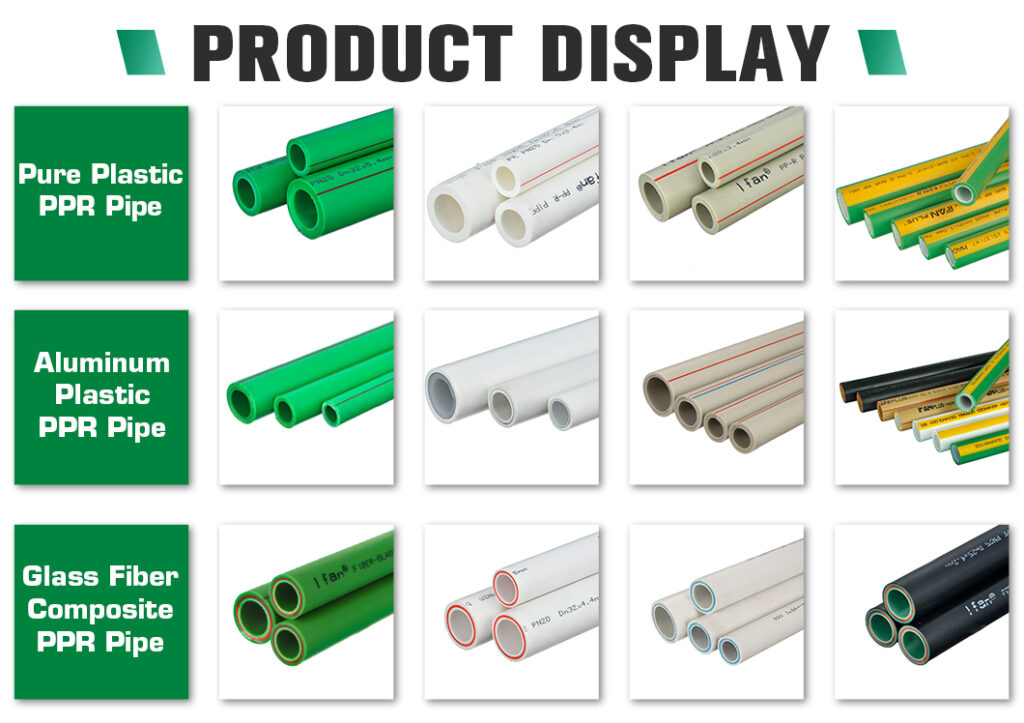depo In the realm of modern plumbing and fluid conveyance systems, achieving secure and reliable connections is pivotal for optimal performance. Polypropylene Random Copolymer (PPR) heat fusion technology emerges as the critical element in realizing seamless connections within piping systems. This article delves into the significance of PPR heat fusion technology, unraveling how it serves as the linchpin for creating robust and uninterrupted connections. PPR Piping Installation Guide
IFAN factory 30+ years manufacture experience support color/size customization support free sample.Welcome to consult for catalog and free samples.This is our Facebook Website: www.facebook.com
Understanding PPR Heat Fusion
PPR heat fusion involves the use of controlled heat to melt the pipe and fitting surfaces, which are then fused together to form a homogenous joint upon cooling. This process leverages the thermoplastic nature of PPR, allowing for repeated heating and cooling cycles without compromising the structural integrity of the material.
Advantages of PPR Heat Fusion Technology
1. Seamless Integration
PPR heat fusion creates a seamless integration between pipes and fittings. The melted material forms a strong bond, ensuring that the connection points are devoid of weak spots or potential leakage areas.
2. High Strength and Durability
The fused joints exhibit high strength and durability, contributing to the longevity of the piping system. This durability ensures that the system can withstand the rigors of continuous use and various environmental conditions.
3. Efficient and Reliable
The efficiency of the heat fusion process results in rapid and reliable connections. Once the PPR pipes and fittings are properly prepared and heated, the fusion process is swift, reducing installation time and minimizing potential disruptions.

4. Resistance to Chemical Corrosion
PPR, inherently resistant to chemical corrosion, ensures that the fused joints remain resilient in the face of various chemical substances. This resistance enhances the reliability and integrity of the entire piping system.
5. Reduced Maintenance Requirements
The homogenous fusion joints created through this technology reduce the need for frequent maintenance. Unlike traditional joints that may loosen over time, PPR heat fusion connections remain stable, reducing the risk of leaks and minimizing maintenance efforts.
Applications Across Industries
PPR heat fusion technology finds wide applications across industries, including residential, commercial, and industrial sectors. Its versatility makes it suitable for water supply systems, heating systems, and even chemical conveyance applications.
Ensuring Proper Implementation
1. Training and Certification
Proper training and certification are essential for individuals involved in PPR heat fusion. Ensuring that technicians are well-versed in the correct temperature, pressure, and fusion time parameters is crucial for successful implementation.
2. Quality Assurance
Employing quality PPR materials and regularly inspecting fusion joints contribute to the overall quality assurance of the piping system. Regular checks help identify potential issues before they escalate.
Conclusion
PPR heat fusion technology stands as the linchpin in achieving seamless connections within piping systems. Its ability to create strong, durable, and leak-free joints positions it as an indispensable element in modern plumbing and construction. As industries continue to prioritize efficiency, reliability, and durability, PPR heat fusion technology remains a cornerstone, offering a robust solution for creating resilient and sustainable piping networks. PPR Piping Installation Guide

